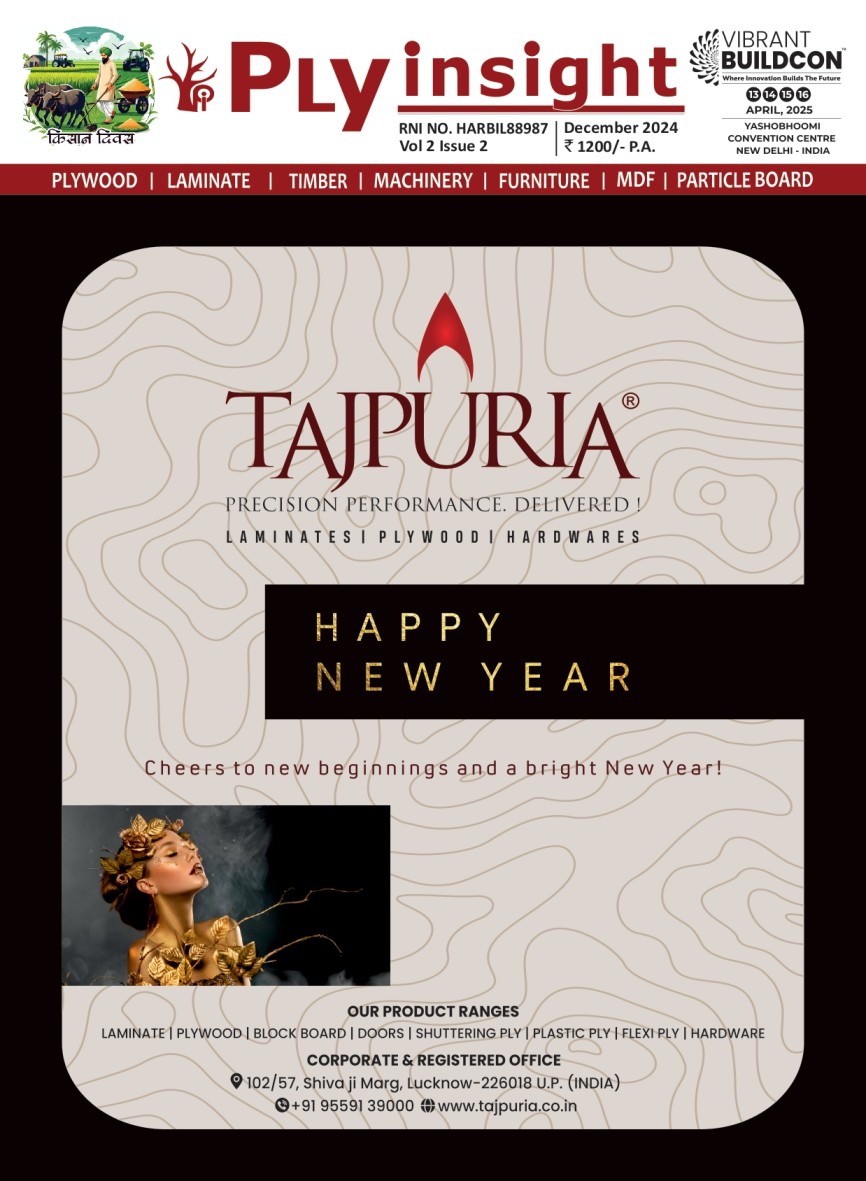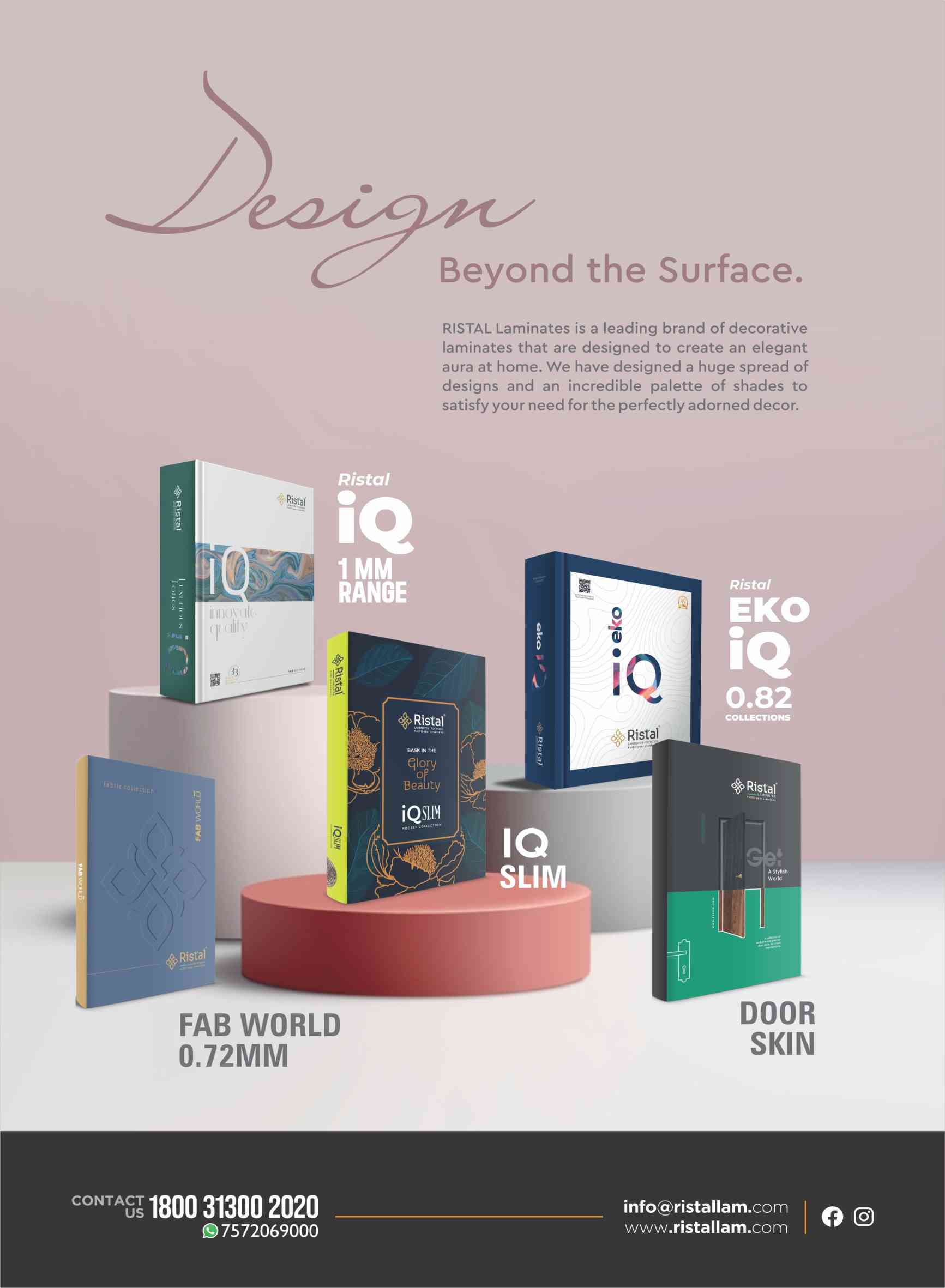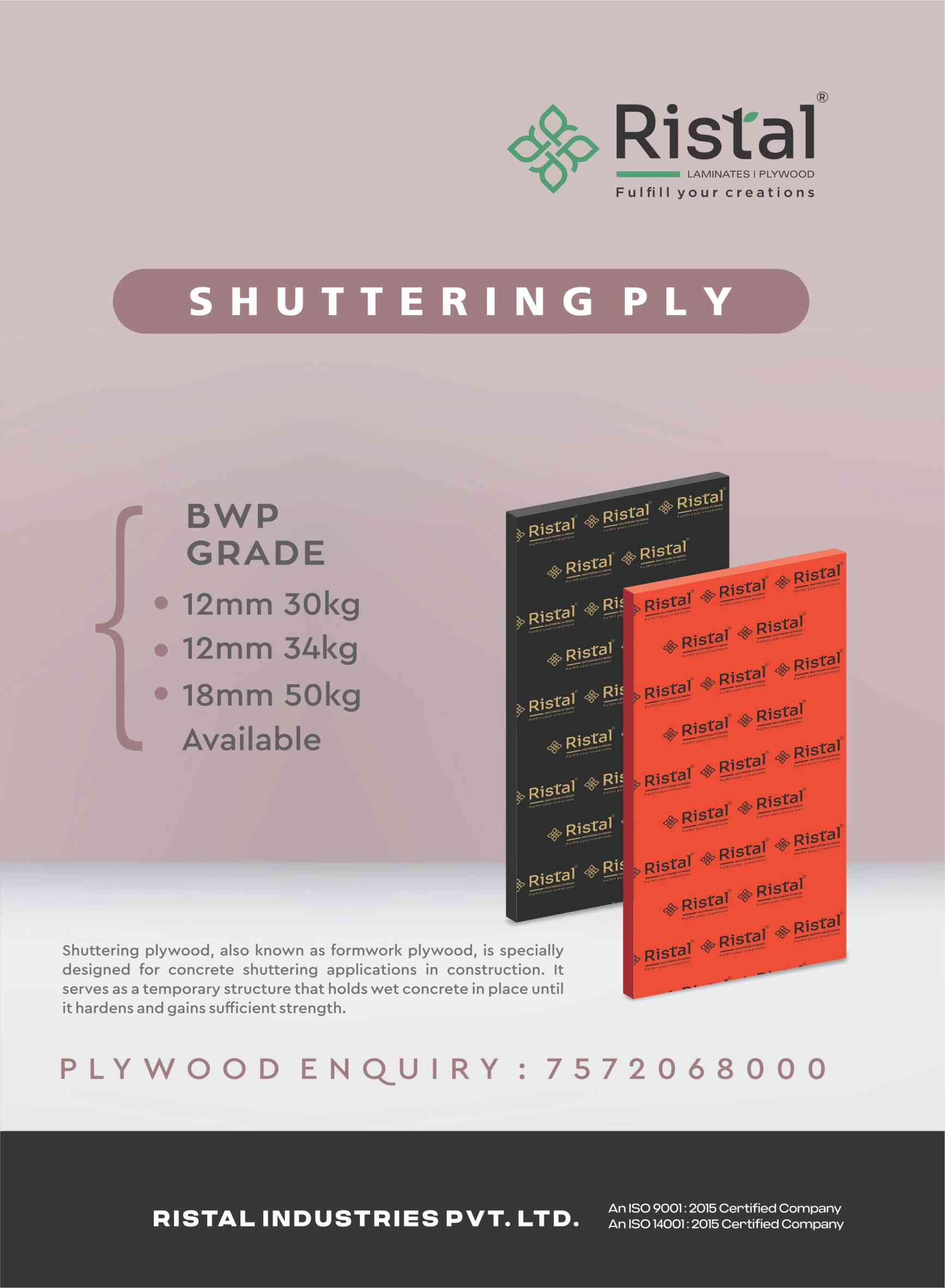
Standardisation of General Purpose Plywood Manufacture
- जून 23, 2021
- 0
Standardisation of General Purpose Plywood Manufacture Under all Weather Conditions – A Practical Approach

Mr. Vaidyanathan Hariharan
The article is part of a multi-part series which will lead to final discussion on a practical approach to creating an all-weather standard process towards manufacturing commercial grade plywood in India
As we are aware, plywood manufacturing in India is not standardised for attaining consistent quality of board across all seasons. Manufacturing is under deep stress in order to create efficiency and defect-free boards.
Our factories and its work staff are panicked, fatigued, and over-worked because of day-to-day struggles for correction of manufacturing parameters. This is obviously leading to quality, consistency and reliability problems within factories and also in the market.
समय की मांग
Indian plywood industry critically needs a single-shot solution for all-weather manufacture of plywood. This kind of production should not depend on external factors such as additives, chemical additions and such psychological aspects.
Prepress System
The basic fact to be appreciated remains that it is beyond the time Indian plywood manufacturers started using prepress board compaction process. The common idea that pre-pressing leads to increased cost of resin is fundamentally wrong.
Prepress compaction of boards has the following advantages:
1. Shorter hot press time (extra hot press cycles per day)
2. Excellent moisture distribution and filling (dryer savings)
3. Uniform bonding properties (rare reject boards)
4. No bending/warping (high-moisture core veneers)
5. Defect-free manufacturing
6. No hardener, liquor ammonia, melamine (for MR Grade)
Manufacturing Myths
Some of the false assumptions/beliefs/ prejudices in our panel manufacturing systems are as follows:
- Not adding liquor ammonia dries out the resin
- Adding more flour as extender increases borer/termite attack
- Resin water tolerance must be 1:2 or more
- Resin cannot be used below 1:0.5 water tolerance
- Melamine (1 to 2.5%) is required for producing MR Grade ply boards
- ‘Fali’ (short) core veneers cannot be pre-pressed
- Core veneers must have 0% moisture content
All these thoughts occur when we look at plywood manufacturing only from the point of view of resin.
Significance of Glue Making
The most significant aspect of plywood manufacture is glue making. Glue is the viscous (thick) to paste-like liquid that is made using resin and an appropriate extender/flour. When we say resin – it incorporates all the additives and chemicals within itself along with optimum viscosity, glue hot flow properties, solids content, cold tack, pH, & buffering. So, glue making is just adding the resin with an appropriate extender/flour. There is nothing else to be added.
Hardeners need to be used only when we have large scale multi-daylight auto-loading, fast curing requirements, and sequential hot pressing following prepress compaction. The use of hardeners for amino & phenol resins mandates flawless operations at consistent process parameters.
Defect-free Plywood Manufacture
The following parameters, combined with appropriate resin making, and glue making will pave the way for totally defect free plywood manufacture in India, under any climatic condition (hot, dry, cold, humid, coastal…whatever)
Core veneer Moisture Content (MC) – 12 to 20%
Resin pH – 7.5 ± 0.2 (buffered)
Resin viscosity – 60+ seconds (B4)
Glue making – Resin + 30 to 40% flour
Glue viscosity – No Flow (B6)
Resin Solids (SC) – 45±1% (Commercial) & 50±1% (MR Grade)
Any glue line treatments added along with such glue does not affect the efficacy of treatment chemical functions.
Advantages
- Prepress and store sheets for any number of days
- Excess glue can be spread and glue-spread core veneers (even if dry) may be used in production following work day
- The concept of liquor ammonia and hardener is passé
- There is no melamine addition in resin for MR Grade plywood
- Once used to this system, manufacturing life is stress-free and doubt-free
- Process mistakes become easily identifiable
- Single process parameters for UF, PF, MPF based glue making
- No more dry-out, pre-curing, psychological worries
We all must join together and make plywood manufacture defect-free and stress-free in India. It is good for the consumer, supply chain, manufacturer, work staff as well as the environment.
Vaidyanathan Hariharan (Vaidya), is a self-made expert in plywood, panels and natural fibre composites manufacturing, moldings and ultra-low emission resin technologies. Vaidya currently serves as technical advisor to few companies, in addition to projects initiating the manufacture of No Added Formaldehyde (NAF) Plywood at Karnataka & Gujarat in India.
h.vaidyanathan@live.com
https://www.linkedin.com/in/hvaidyanathan
सभी मौसम स्थितियों के तहत सामान्य प्रयोजन
प्लाईवुड निर्माण का मानकीकरण – एक व्यावहारिक दृष्टिकोण
 श्री वैद्यानाथन हरिहरण
श्री वैद्यानाथन हरिहरण
जैसा कि हम जानते हैं, भारत में प्लाईवुड निर्माण सभी मौसमों में बोर्ड की लगातार गुणवत्ता प्राप्त करने के लिए मानकीकृत नहीं है। दक्षता और दोष मुक्त बोर्ड बनाने के लिए विनिर्माण गहरे दबाव में है।
विनिर्माण मानकों में सुधार के लिए दिन-प्रतिदिन के संघर्षों के कारण हमारे कारखाने और उसके काम करने वाले कर्मचारी घबराए हुए, थके हुए और अधिक काम कर रहे हैं। यह स्पष्ट रूप से कारखानों के भीतर और बाजार में भी गुणवत्ता, स्थिरता और विश्वसनीयता की समस्याओं का कारण बन रहा है।
समय की आवश्यकता
भारतीय प्लाइवुड उद्योग को हर मौसम में प्लाइवुड के निर्माण के लिए एकल-शॉट समाधान की गंभीर आवश्यकता है। इस प्रकार का उत्पादन बाहरी कारकों जैसे कि एडिटिव्स, रासायनिक परिवर्धन और ऐसे मनोवैज्ञानिक पहलुओं पर निर्भर नहीं होना चाहिए।
प्रीप्रेस सिस्टम
मूल तथ्य की सराहना की जानी चाहिए कि यह उस समय से परे है जब भारतीय प्लाईवुड निर्माताओं ने प्रीप्रेस बोर्ड संघनन प्रक्रिया का उपयोग करना शुरू किया। यह आम धारणा है कि प्री-प्रेसिंग से रेजिन की लागत बढ़ जाती है, मौलिक रूप से गलत है।
बोर्डों के प्री प्रेस संधनन के निम्नलिखित फायदे हैं:-
1. कम होट प्रेसींग समय (होट प्रेस से अधिक बार निकलना)
2. उत्कृष्ट नमी वितरण और फिलींग (ड्रायर खर्च में बचत)
3. बेन्डींग की समरूपता (रीजेक्सन कम होना)
4. कोई बेन्डींग/वार्पिंग नहीं (उच्च नमी वाले कोर वीनियर)
5. दोष मुक्त विनिर्माण
6. MR Grade के लिए हार्डनर, लिकर अमोनिया मेलामाइन की कोई जरूरत नहीं
निर्माण में प्रचलित धारणाएं
हमारे पेनल निर्माण प्रणालियों में कुछ गलत धारणाएं/विश्वास/पूर्वाग्रह इस प्रकार हैंः
- लिकर अमोनिया नहीं मिलाने से रेजीन सुख जाता है
- विस्तारक के रूप में मैदा अधिक मिलाने से बोरर/दीमक के हमले का खतरा बढ़ जाता है
- रेजीन वाटर की टोलरेंस 1ः2 या अधिक होनी चाहिए
- 1: 0.5 से कम वाटर टोलरेंस पर रेजीन का उपयोग नहीं हो सकता
- MR ग्रेड प्लाइ बनाने के लिए 1 से 2.5 प्रतिशत मेलामाइन की जरूरत है
फाली (छोटी) कोर प्री प्रेस में इस्तेमाल नहीं हो सकती
कोर विनियर में 0 प्रतिशत नमी होनी चाहिए
ये सभी विचार तभी आते हैं जब हम केवल रेजीन के दृष्टिकोण से प्लाइवुड निर्माण को देखते हैं।
ग्लु बनाने का महत्व
प्लाइवुड निर्माण का सबसे महत्वपूर्ण पहलू ग्लु बनाना है। ग्लु एक चिपचिपा (मोटा) पेस्ट जैसा तरल है जो रेजीन और एक उपयुक्त विस्तारक (Extender)/मैदा को मिलाकर बनाया जाता है। जब हम रेजीन कहते हैं तो इसके अंदर सभी एडीसीव और रसायन समाहित होते हैं, जैसे कि optimum viscosity, glue hot flow properties, solid content, cold tack, PH, एवं Buffering। इसलिए रेजीन में उपयुक्त extender/flour मिलाना ही पर्याप्त है। इसके अलावा और कुछ भी मिलाने की आवश्यकता नहीं है।
हार्डनर का उपयोग केवल तभी किया जाना चाहिए जब हमारे पास बड़े पैमाने पर मल्टी-डेलाइट ऑटो-लोडिंग, तेजी से सुखाने की आवश्यकता हो, और प्रीप्रेस संघनन के बाद अनुक्रमिक हॉट प्रेसिंग हो। अमीनो और फिनोल रेजिन के लिए हार्डनर का उपयोग लगातार प्रक्रिया मापदंडों पर निर्दोष संचालन को अनिवार्य करता है।
दोष मुक्त प्लाईवुड निर्माण
उपयुक्त रेजिन बनाने और ग्लु बनाने के साथ संयुक्त निम्नलिखित पैरामीटर भारत में किसी भी जलवायु स्थिति (गर्म, शुष्क, ठंडा, आर्द्र, तटीय … जो भी हो) के तहत पूरी तरह से दोष मुक्त प्लाईवुड निर्माण का मार्ग प्रशस्त करेंगे।
Core veneer Moisture Content (MC) – 12 to 20%
Resin pH – 7.5 ± 0.2 (buffered)
Resin viscosity – 60+ seconds (B4)
Glue making – Resin + 30 to 40% flour
Glue viscosity – No Flow (B6)
Resin Solids (SC) – 45±1% (Commercial) & 50±1% (MR Grade)
कोई भी ग्लु लाइन ट्रीटमेंट जो ऐसे ग्लु के साथ जोड़ा गया हो ट्रीटमेंट केमीकल की प्रभावकारिता को प्रभावित नहीं करता है।
लाभ
- प्रीपेस करने के बाद कई दिनों तक पेनल को रखा जा सकता है
- बचे हुए ग्लु को कोर में लगाकर रखा जा सकता है और इसे अगले दिन (भले ही सुख गया हो) इस्तेमाल किया जा सकता है
- लिकर अमोनिया और हार्डनर की अवधारणा भुलायी जा सकती है
- MR ग्रेड प्लाइवुड बनाने के लिए मेलामाइन मिलाने की आवश्यकता नहीं रहेगी
- एक बार इस व्यवस्था के अभ्यस्त हो जाने के बाद निर्माण प्रक्रिया तनाव और शंका रहित हो जाएगी
- काम की प्रक्रिया की गलतियां आसानी से पकड़ी जा सकती है।
- UF, PF, MPF आधारित ग्लु बनाने की एकल प्रक्रिया बन जाएगी।
- Dry out, Procuring के साथ मानसिक चिंताएं समाप्त हो जाएंगी
हम सभी को एक साथ जुड़ना चाहिए और भारत में प्लाईवुड निर्माण को दोष मुक्त और तनाव मुक्त बनाना चाहिए। यह उपभोक्ता, आपूर्ति श्रृंखला, निर्माता, काम करने वाले कर्मचारियों के साथ-साथ पर्यावरण के लिए भी अच्छा है।
वैद्यनाथन हरिहरन (वैद्य), प्लाईवुड, पैनल और प्राकृतिक फाइबर कंपोजिट निर्माण, मोल्डिंग और अल्ट्रा-लो एमिशन रेजिन प्रौद्योगिकियों में एक स्व-निर्मित विशेषज्ञ है। वैद्य वर्तमान में भारत में कर्नाटक और गुजरात में नो एडेड फॉर्मलडिहाइड (NAF) प्लाइवुड के निर्माण की पहल करने वाली परियोजनाओं के अलावा, कुछ कंपनियों के लिए तकनीकी सलाहकार के रूप में कार्य करता है।































































